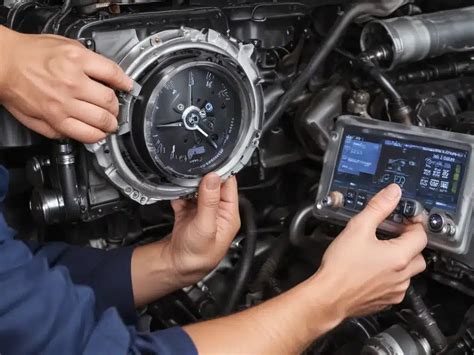Avoid Costly Repairs: Adjust Your Dash95u10b Tension
The Dash95u10b, a common industrial sewing machine, is a workhorse known for its durability. However, neglecting proper maintenance, especially tension adjustment, can lead to costly repairs down the line. This comprehensive guide will walk you through understanding and adjusting the tension on your Dash95u10b, preventing potential problems and maximizing its lifespan. We'll cover common issues, troubleshooting steps, and best practices to keep your machine running smoothly.
Understanding Dash95u10b Tension
The Dash95u10b, like most industrial sewing machines, utilizes a sophisticated system of tension to create even stitches. Proper tension ensures that the upper and lower threads interlock correctly, preventing skipped stitches, thread breakage, and fabric puckering. Imbalance in this tension can manifest in several ways, ultimately impacting the quality of your stitching and potentially damaging the machine itself.
Common Problems Indicating Incorrect Tension
Several symptoms point towards the need for Dash95u10b tension adjustment:
- Skipped stitches: This is a clear indication that the upper and lower tensions aren't balanced correctly.
- Broken threads: Frequent thread breakage, particularly the upper thread, suggests excessive tension.
- Looping on the underside: Excessive lower tension often leads to loops forming on the underside of the fabric.
- Puckering of fabric: Uneven tension causes the fabric to pucker or gather during stitching.
- Uneven stitch length: While not solely a tension issue, inconsistent stitch length can sometimes be a symptom of imbalanced tension.
How to Adjust Dash95u10b Tension: A Step-by-Step Guide
Note: Before proceeding, always consult your machine's manual for specific instructions and diagrams. The following steps provide a general overview and might vary slightly depending on your specific Dash95u10b model.
-
Power Down & Disconnect: Always turn off and unplug your sewing machine before performing any maintenance or adjustments.
-
Identify Tension Controls: Locate the upper and lower tension dials or knobs on your machine. These are usually clearly marked. The upper tension is typically controlled by a dial on the top of the machine, near the thread path. The lower tension is often adjusted via a knob or screw located near the bobbin case.
-
Test Fabric: Choose a scrap of fabric similar to the material you typically sew with.
-
Initial Adjustment: Begin by setting both upper and lower tensions to their middle settings. This serves as a starting point for fine-tuning.
-
Stitching Test: Sew a test seam. Observe the stitching for any imperfections, such as skipped stitches, thread breakage, or fabric puckering.
-
Fine-Tuning: Based on your observations, make incremental adjustments to the upper and lower tensions. If you're experiencing skipped stitches or broken threads, try slightly reducing the upper tension. If you have loops on the underside, try increasing the upper tension and slightly decreasing the lower tension. Remember to test your adjustments after each small change.
-
Repeat Until Optimal: Continue this process of adjusting and testing until you achieve perfectly formed, even stitches without any imperfections.
Troubleshooting Specific Tension Issues
H2: My Dash95u10b is constantly breaking the upper thread. What should I do?
This usually indicates excessive upper tension. Try turning the upper tension dial down incrementally, retesting after each adjustment. Also, check the thread path for any snags or friction points.
H2: I’m getting loops on the underside of my fabric. How can I fix this?
This is often a sign of insufficient upper tension or excessive lower tension. Try slightly increasing the upper tension while slightly decreasing the lower tension.
H2: My stitches are uneven and inconsistent. What could be causing this?
While inconsistent stitches might stem from several factors, including needle issues or improper bobbin winding, tension imbalance could contribute to the problem. Carefully adjust both upper and lower tensions, testing and tweaking until even stitching is achieved.
Beyond Tension: Preventative Maintenance
Regular maintenance is vital to prevent costly Dash95u10b repairs. This includes:
- Lubrication: Keep your machine lubricated according to the manufacturer's recommendations.
- Cleaning: Regularly clean lint and debris from the machine’s interior.
- Needle Replacement: Use the correct needle size and type for your fabric. Replace needles frequently.
- Bobbin Winding: Ensure bobbins are correctly wound to avoid tension problems.
By understanding and regularly adjusting the tension on your Dash95u10b, combined with preventative maintenance, you can significantly extend the lifespan of your machine, avoiding costly repairs and ensuring high-quality stitching for years to come. Remember to always consult your machine's manual for detailed instructions and safety precautions.

